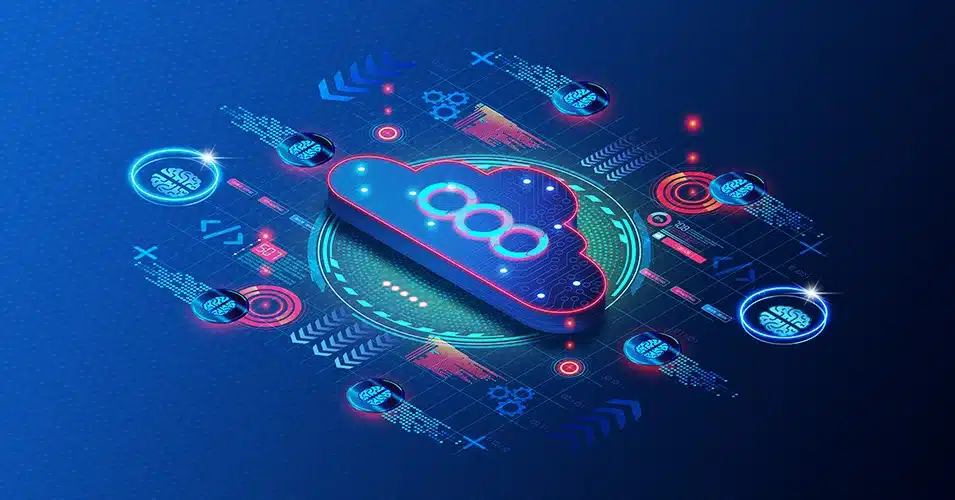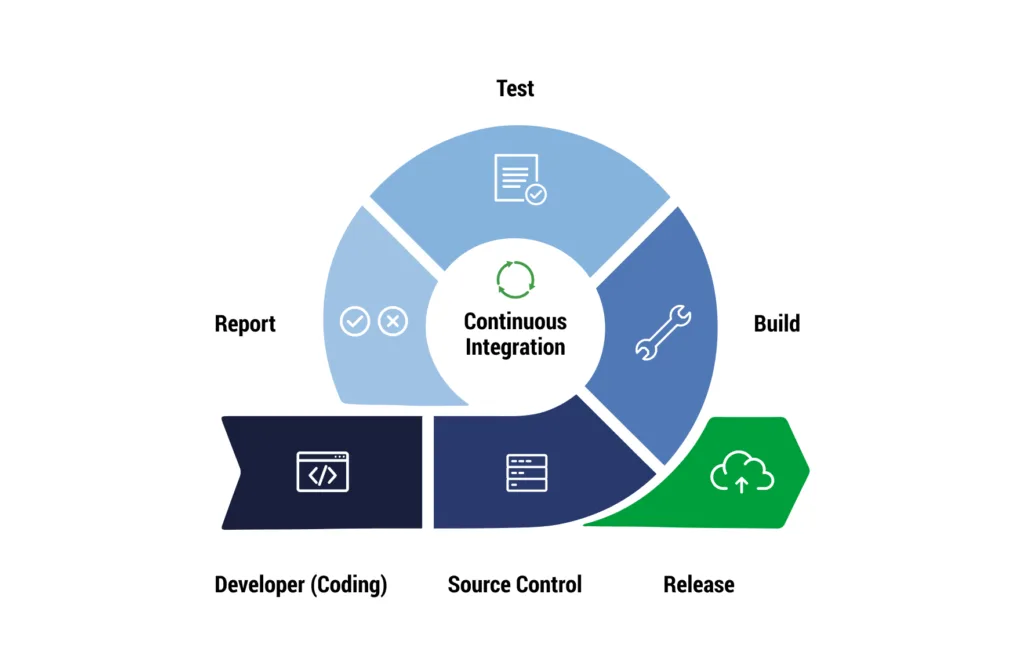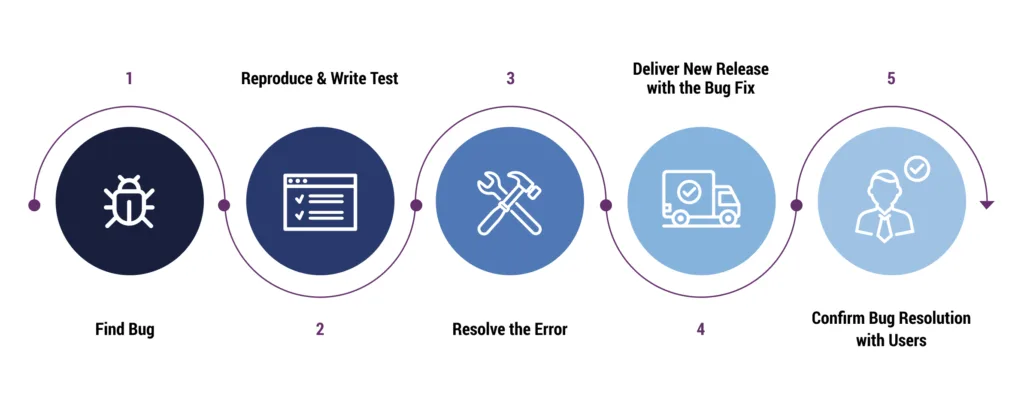
Let’s say you were working on a new recipe for cookies that you had never tried before. While some of the ingredients were familiar to you, others were not, and the approach the recipe took was brand new. If you baked 10 dozen cookies the first time you attempted this new recipe, the chance that you ended up with more bad cookies than good would be more likely than if you were to test the recipe and method one dozen cookies at a time, learning and improving with each subsequent batch.
Continuous integration is similar to this second baking method – by taking smaller steps and iterating on what you learn, you can improve your end product more efficiently. If you’re not sure whether to implement continuous integration at your organization, learn more about the top 12 benefits of the practice.
What is Continuous Integration?
Continuous integration (CI) is defined as a software development process where code changes are integrated and merged continuously into a centralized software project, often several times per day. Once the code is committed, it’s automatically run through a suite of continuous integration testing stages. This process allows for errors to be caught early in development, preventing them from ever reaching the production environment or causing issues down the road during a DevOps migration is planned.

Top 12 Benefits of Continuous Integration
Below, find the top benefits of continuous integration as a DevOps best practice.
Speedier Release Rate
Code that is constantly in flow and committing in a continuous fashion opens the door to faster and more continuous releases. In CI, development teams should have a production environment available that tests the new changes to determine if the release will go as planned or if further changes need to be made to be ready for the end-user.
Less Code to Change
By integrating early and often, smaller portions of code are being changed at once. This can help isolate problems in the code with more precision and allow for less work to change the code after finding errors through continuous testing.
This can be especially beneficial with larger teams or remote teams, where a significant amount of work can be done before it’s caught without CI. Smaller necessary code changes caught more quickly can keep collaboration rolling.
Quicker Mean Time to Resolution (MTTR)
The mean time to resolution (MTTR) is how long it takes to repair a failure in code and recover the system. Frequent commits and testing smaller portions of code result in a faster mean time to resolution.
More Precise Fault Isolations
When the scope for problems shrinks, so does the potential fallout. Setting up continuous integration enables more precise fault isolation, minimizing the negative impact of problems and allowing for faster resolution. You’re able to find the error, pinpointing where and when it happened with greater accuracy, decreasing their ripple effects and getting your systems back to normal quickly.
Reduced Backlog
Sometimes, defects work their way into your code, but they’re not important enough to address during the development process. Once the project is in full production mode, these non-critical bugs may still be hanging around and cleanup of the backlog can feel daunting. By testing smaller pieces of code at once and committing continuously, non-critical errors are also more likely to be caught and addressed quickly, leaving you with a tidier backlog once everything hits production.
Decreased Costs
When errors are low, code chunks are smaller, and fixes are faster, development costs go down. Even though it may seem like making continuous commits and integrations to a code repository would be more costly, CI usually leads to reduced development costs and cloud TCO. Reducing errors also means developers can spend less time squashing bugs and more time advancing the product.
A More Transparent and Accountable Team Environment
Instead of pointing fingers and putting improvements at a standstill, a continuous integration process builds a culture of accountability and transparency. The stakes are lower with smaller chunks of code to test, making addressing a problem easier for everyone on the team. Internal feedback and communication are vital pieces of the development lifecycle.
More Test Reliability
The testing process is also improved through continuous integration. Tests become more reliable with smaller portions of code to check, increasing the likelihood of true positive and negative tests. You won’t have to worry as much about sifting through confusing or less-than-accurate test results as much with continuous integration.
Lower Change Failure Rate
A change failure rate (CFR) measures how often deployments fail as a percentage of the total that have been pushed to production. Since fewer errors make their way to the production environment, continuous integration results in a lower CFR.
A More User-Friendly Product
You run the risk of losing customers before they even get a chance to get acquainted with your product if they experience an error or roadblock soon after engaging with it. Worse yet, if a bug hangs around too long and end users don’t see improvements on the horizon, they may give up and move to a competitor.
You can keep customers and other users happy by offering quick updates to features, speedy fixes to bugs, and fewer issues from the outset. This can make users feel like their feedback is being heard and their needs are valued.

Better Code Quality
The more you are checking code along the way, the better the overall code quality will be. Better code quality makes for a better user experience, faster times to fix problems that do arise, lower costs, and less downtime.
Simple Maintenance and Update Process
Continuous integration works well in tandem with microservices built into the architecture of the code. When only parts of the system need to go down for updates, this reduces the impact changes have on the overall product. Major maintenance tasks can be scheduled during non-peak times, aligning with commits and tests for smoother updates.
Enjoy the Benefits of Continuous Integration with DevOps Consulting Services
For organizations looking to transition to a continuous integration environment, there’s a lot to consider to truly improve and shorten development and innovation cycles. TierPoint’s cloud DevOps experts can help you achieve efficient continuous integration, so there’s nothing standing between you and your next project updates. Learn more about our cloud DevOps consulting services.
FAQs
Continuous integration (CI) is a software development practice where code changes are frequently integrated into a shared repository. Its goal is to detect integration issues early by automating code builds and running tests on each integration. Continuous delivery (CD), on the other hand, is an extension of CI that automates the entire software release process. Its aim is to ensure the software is always in a deployable state, thus allowing teams to deliver new features and updates to production in a faster, more reliable manner.
A continuous integration tool is used to reduce the number of errors and streamline the software development process.
CI/CD can lead to a faster time to production, reduce the likelihood and consequences from errors, and reduce the budget of the project. However, it does require an upfront investment of time and resources to pull off well.
